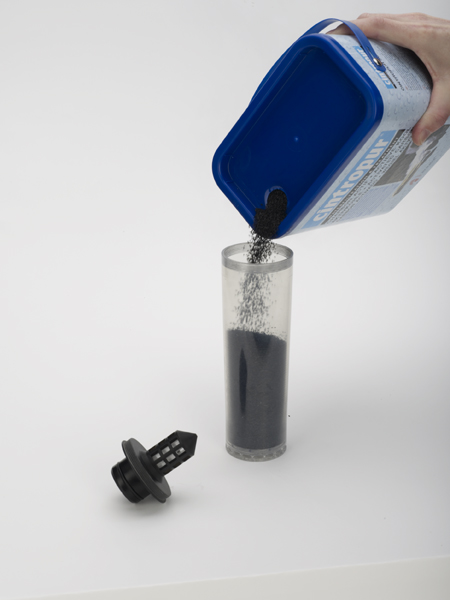Activated Carbon
Activated carbon is a form of carbon processed to have small, low-volume pores that increase the surface area available for adsorption of colour, odour, chlorine and chemicals in water treatment. The Cintropur granular activated carbon media is ideal for treating rainwater and chlorinated town supplies. Due to its high degree of microporosity, just one gram of activated carbon has a surface area of around 3000 m2 as determined by adsorption.
Lets look at the carbon container in the DUO unit in the image below. It has a volume of 0.57Ltr, so thats around 625,000 m2 of surface area! Compared to carbon cartridges more commonly found in most filter brands the Cintropur carbon water treatment units provide the most efficient treatment and are the most economical to maintain.


Cintropur Treatment unit volumes:
NW25TE-CTN, DUO-CTN = 0.57 LTR (6x refills), area = 625,000 m2 by adsporption.
NW32TE = 1.7 LTR (2x refills), area = 1,875,000 m2 by adsporption.
NW500 = 4.85 LTR, area = 5,325,000 m2 by adsporption.

Carbon filtering is a method of filtering that uses a bed of activated carbon to remove contaminants and impurities, using chemical adsorption. Each particle, or granule, of carbon provides a large surface area, or pore structure, allowing contaminants the maximum possible exposure to the active sites within the filter media. Activated carbon works via a process called adsorption, whereby pollutant molecules in the fluid to be treated are trapped inside the pore structure of the carbon substrate. Carbon filtering is commonly used for water purification. Active carbon filters are most effective at removing chlorine, particles such as sediment, volatile organic compounds (VOCs), taste and odor from water.
We are happy to discuss and provide solutions to your water quality concerns. Feel free to complete our no obligation request form so we can come back to you.



